Year 5
The English curriculum is built around the three interrelated strands of language, literature and literacy. Teaching and learning programs should balance and integrate all three strands. Together, the strands focus on developing students' knowledge, understanding and skills in listening, reading, viewing, speaking, writing and creating. Learning in English builds on concepts, skills and processes developed in earlier years, and teachers will revisit and strengthen these as needed.
In Years 5 and 6, students communicate with peers and teachers from other classes and schools, community members, and individuals and groups, in a range of face-to-face and online/virtual environments.
Students engage with a variety of texts for enjoyment. They listen to, read, view, interpret and evaluate spoken, written and multimodal texts in which the primary purpose is aesthetic, as well as texts designed to inform and persuade. These include various types of media texts including newspapers, film and digital texts, junior and early adolescent novels, poetry, non-fiction and dramatic performances.
The range of literary texts for Foundation to Year 10 comprises Australian literature, including the oral narrative traditions of Aboriginal and Torres Strait Islander Peoples, as well as the contemporary literature of these two cultural groups, and classic and contemporary world literature, including texts from and about Asia.
Literary texts that support and extend students in Years 5 and 6 as independent readers describe complex sequences, a range of non-stereotypical characters and elaborated events including flashbacks and shifts in time. These texts explore themes of interpersonal relationships and ethical dilemmas within real-world and fantasy settings. Informative texts supply technical and content information about a wide range of topics of interest as well as topics being studied in other areas of the curriculum. Text structures include chapters, headings and subheadings, tables of contents, indexes and glossaries. Language features include complex sentences, unfamiliar technical vocabulary, figurative language, and information presented in various types of graphics.
Students create a range of imaginative, informative and persuasive types of texts including narratives, procedures, performances, reports, reviews, explanations and discussions.
(source: www.australiancurriculum.edu.au)
Achievement Standard
Receptive modes (listening, reading and viewing)
By the end of Year 5, students explain how text structures assist in understanding the text. They understand how language features, images and vocabulary influence interpretations of characters, settings and events.
When reading, they encounter and decode unfamiliar words using phonic, grammatical, semantic and contextual knowledge. They analyse and explain literal and implied information from a variety of texts. They describe how events, characters and settings in texts are depicted and explain their own responses to them. They listen and ask questions to clarify content.
Productive modes (speaking, writing and creating)
Students use language features to show how ideas can be extended. They develop and explain a point of view about a text, selecting information, ideas and images from a range of resources.
Students create imaginative, informative and persuasive texts for different purposes and audiences. They make presentations which include multimodal elements for defined purposes. They contribute actively to class and group discussions, taking into account other perspectives. When writing, they demonstrate understanding of grammar using a variety of sentence types. They select specific vocabulary and use accurate spelling and punctuation. They edit their work for cohesive structure and meaning.
(source: www.australiancurriculum.edu.au)
- Plus Plan
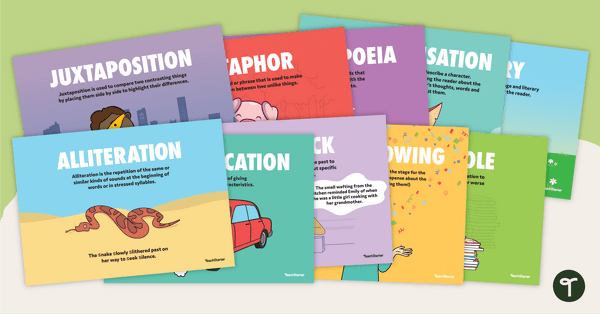
Literary Devices Poster Pack
Explore the various literary devices used by authors with the set of colourful classroom posters.
- Free Plan
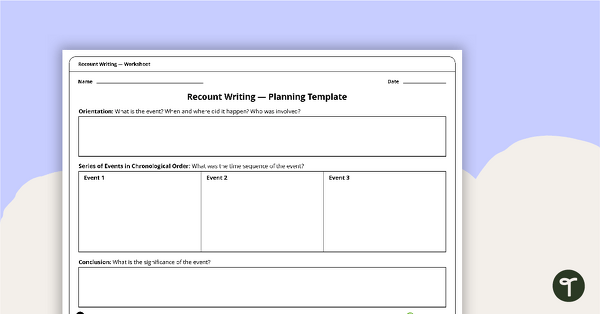
Recount Writing Planning Template
A template for students to use when planning a recount.
- Plus Plan
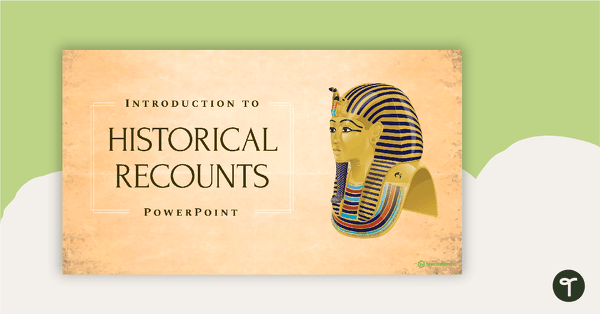
Introduction to Historical Recounts PowerPoint
A 17 slide editable PowerPoint template to use when teaching older students about the structure and language features of historical recounts.
- Plus Plan
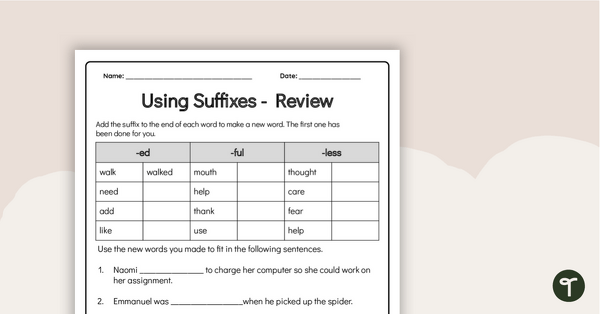
Using Suffixes - Grammar Worksheet
Review concepts related to suffixes with a printable grammar worksheet.
- Plus Plan
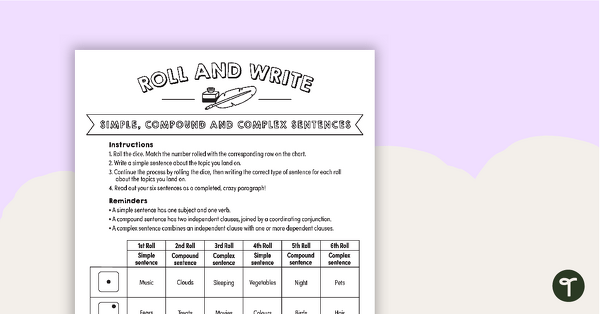
Roll and Write – Simple, Compound and Complex Sentences
An interactive activity to help students practise writing simple, compound and complex sentences.
- Plus Plan
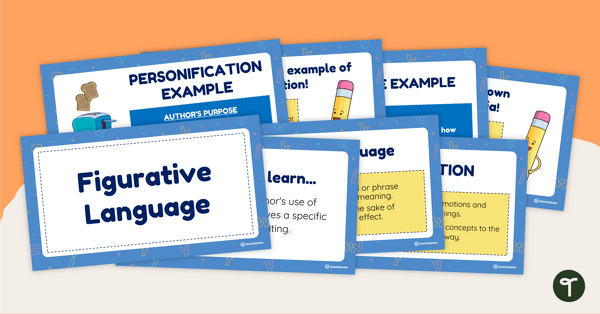
Figurative Language PowerPoint
Explore figurative language with your students using this comprehensive teaching presentation.
- Plus Plan
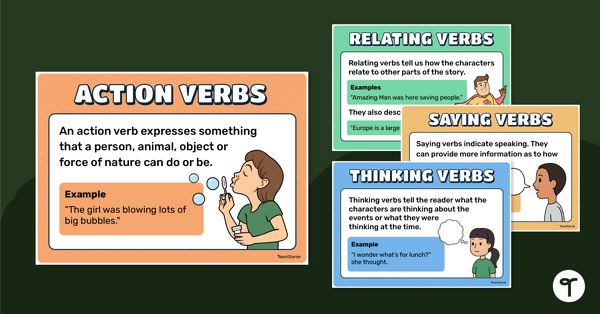
Types of Verbs Poster Set
Explore the different types of verbs with this set of verb posters displaying the definition and examples of action, saying, thinking and relating verbs.
- Plus Plan
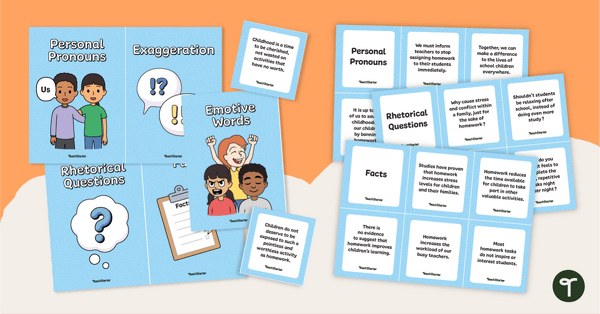
Persuasive Devices Sorting Activity
Explore persuasive devices with your students using this set of sorting cards.
- Plus Plan
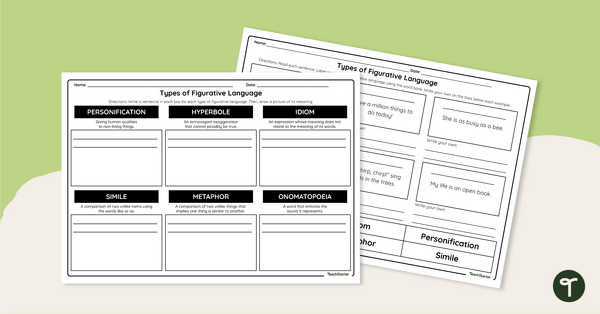
Types of Figurative Language - Worksheet
Practise identifying and creating examples of figurative language with this printable worksheet.
- Plus Plan
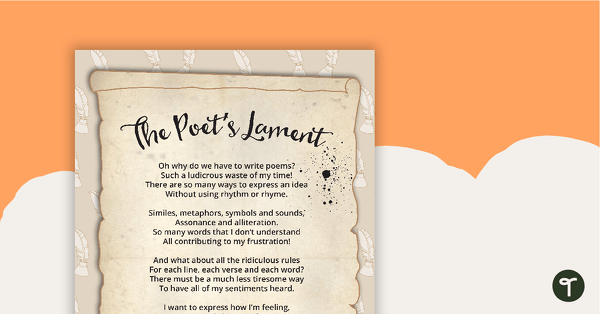
The Poet's Lament - Comprehension
A comprehension activity using a poem.
- Plus Plan
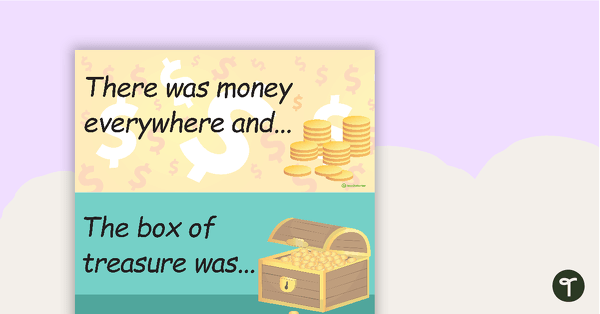
Narrative Sentence Starter Cards
Thirty sentence starter cards for narratives.
- Plus Plan
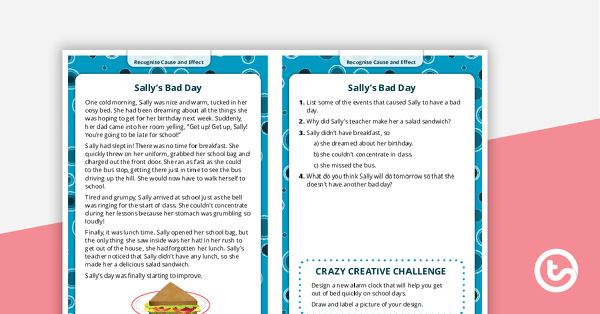
Comprehension Task Cards - Recognising Cause And Effect
A set of comprehension task cards to help students recognise cause and effect when reading.
- Plus Plan
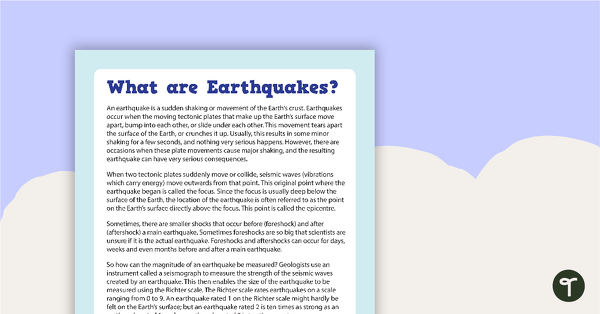
Comprehension - What are Earthquakes?
A comprehension activity about 'What are Earthquakes?'
- Plus Plan
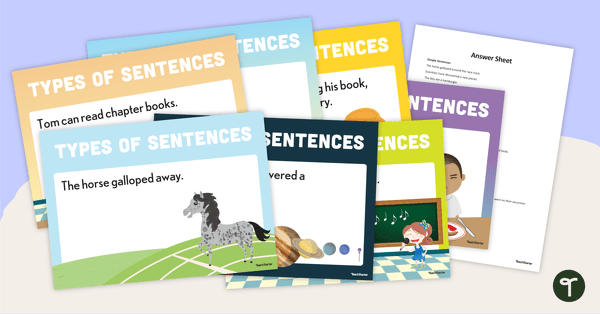
Simple, Compound and Complex Sentences Flashcards
Use this set of 16 colourful flashcards to introduce students to the attributes that make up simple, compound and complex sentences.
- Plus Plan
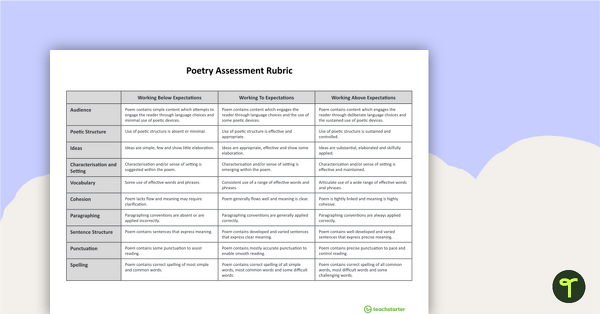
NAPLAN-Style Assessment Rubric for Poetry
A NAPLAN-style rubric designed to help teachers to assess student's poetry.
- Plus Plan
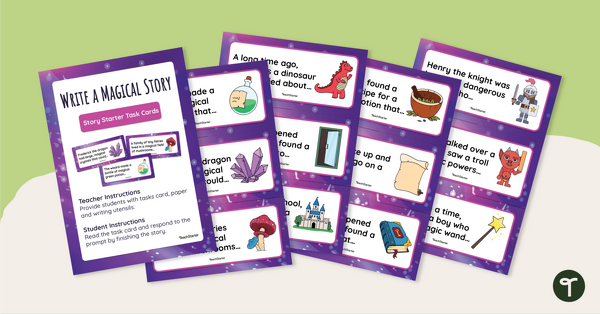
Magical Story Starters Task Cards
Get your students writing magical stories with this set of story starter task cards.
- Plus Plan
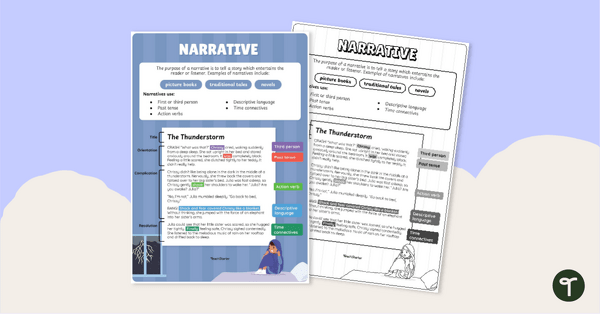
Narrative Text Type Poster With Annotations
Display this narrative text with annotations to help students identify the structure of a narrative.
- Plus Plan
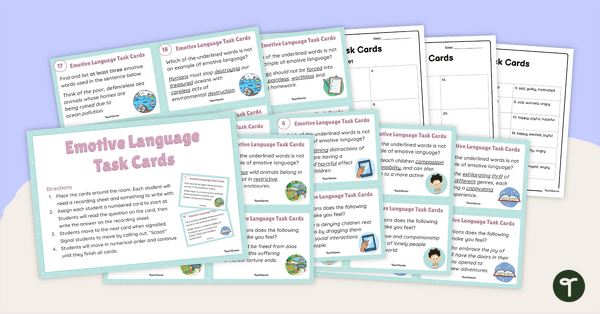
Emotive Language Task Cards
Get students exploring emotive language examples with this set of task cards perfect for your persuasive writing unit.
- Plus Plan
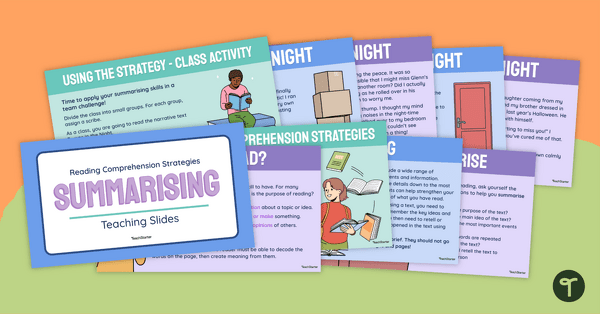
Summarising Teaching Slides
Teach students all about summarising with 15 teaching slides of summarising goodness.
- Plus Plan
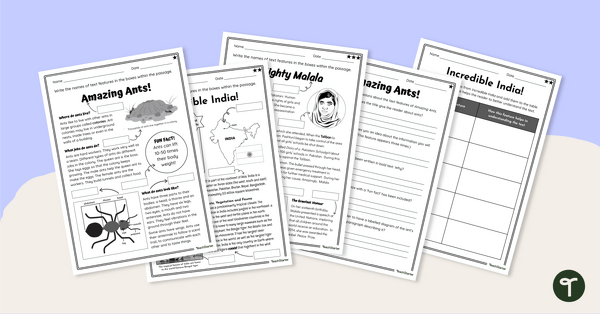
Label the Non-Fiction Text Features Worksheets
Have your students label text features in non-fiction texts with this set of three differentiation text features worksheets.
- Plus Plan
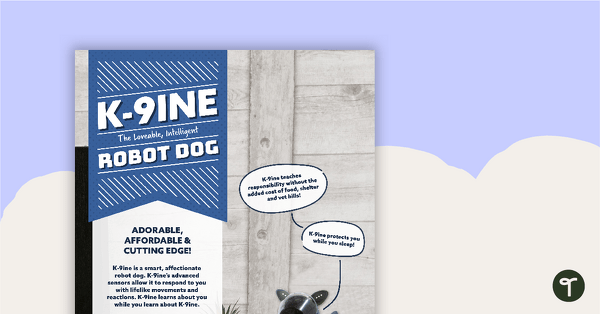
Advertisement Worksheet – K-9ine the Robot Dog
A comprehension worksheet for a persuasive magazine advertisement about a robotic dog.
- Plus Plan
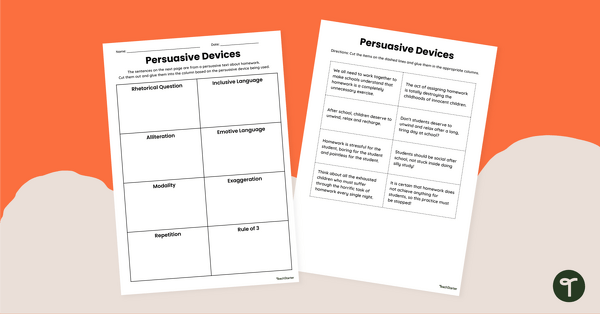
Persuasive Device Examples – Cut and Paste Worksheet
Match the persuasive writing techniques with the correct examples using this simple cut-and-paste worksheet perfect for your persuasive writing unit.
- Plus Plan
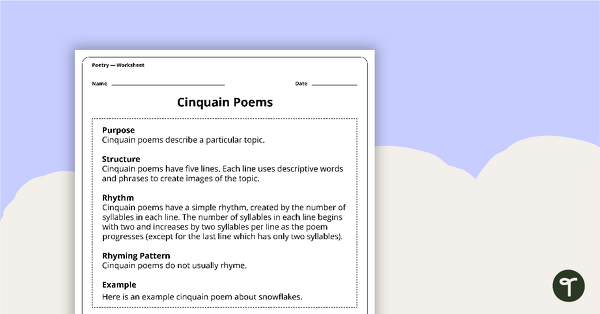
Writing a Cinquain Poem Worksheet
A 2 page worksheet for students to use when learning how to write a cinquain poem.
- Plus Plan
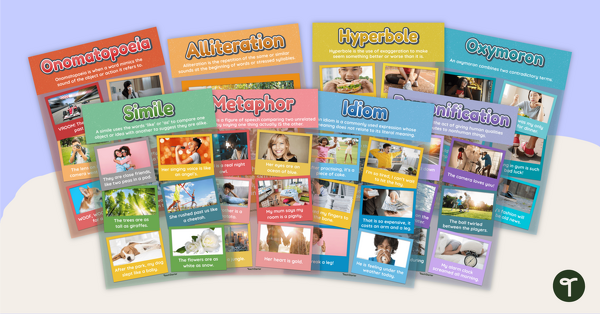
Figurative Language Poster Pack
Remind your students about the most common types of figurative language with this set of classroom display posters.
- Plus Plan
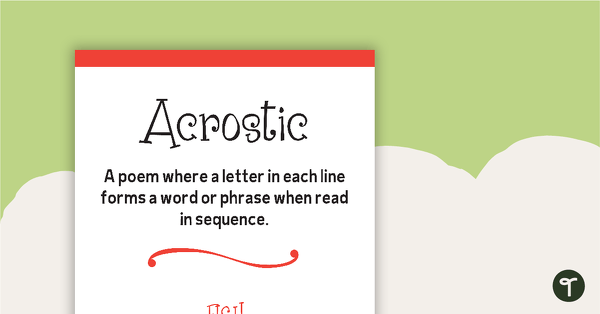
Types of Poetry Posters
A set of 9 posters examining different styles of poetry.
- Plus Plan
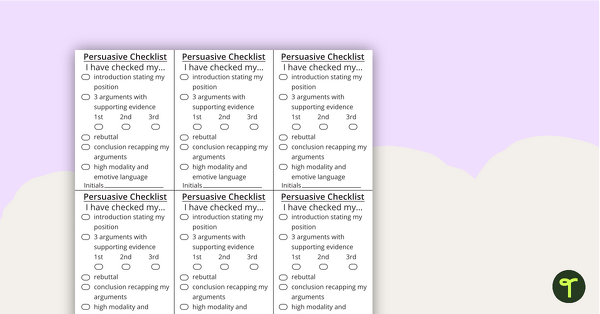
Persuasive Writing Checklist
Now your students can make sure that they have everything they need in their persuasive writing.
- Plus Plan
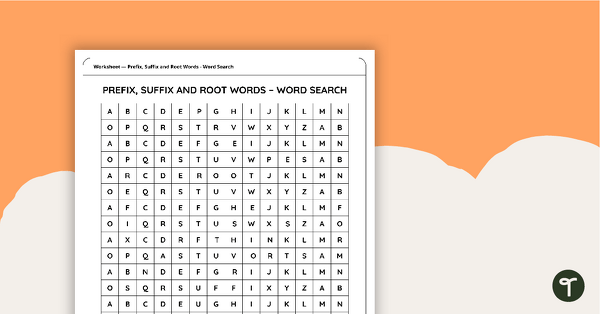
Prefix, Suffix and Root Words Word Search
Identify terminology related to prefixes, suffixes and root words in this word search.
- Free Plan
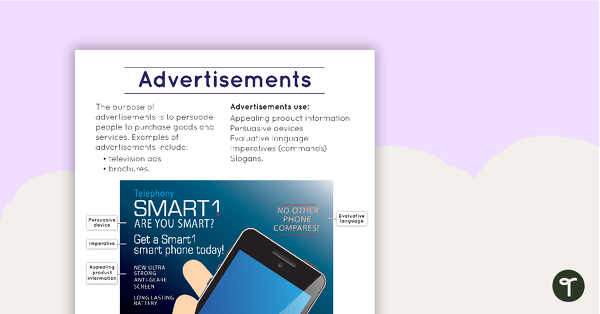
Advertisement Text Type Poster With Annotations
A poster about advertisements, including an annotated example.
- Plus Plan
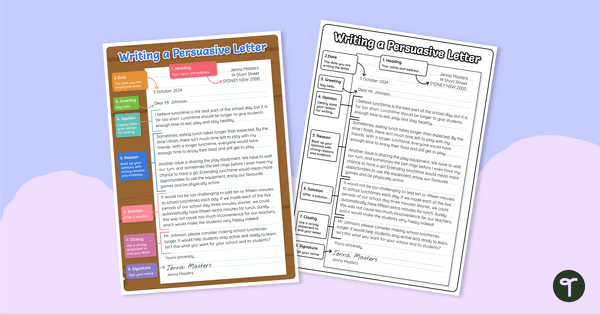
Writing A Persuasive Letter Poster
A poster showing students how to lay out a persuasive letter.
- Plus Plan
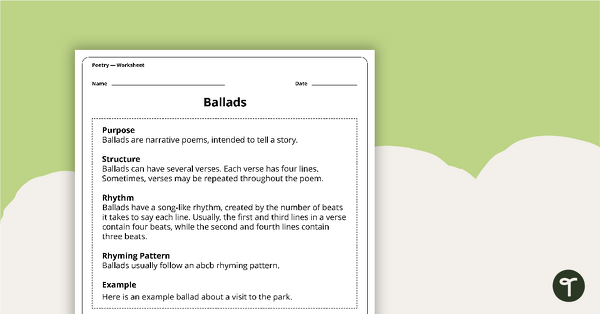
Writing a Ballad Worksheet
A 2 page worksheet for students to use when learning how to write a ballad.
- Plus Plan
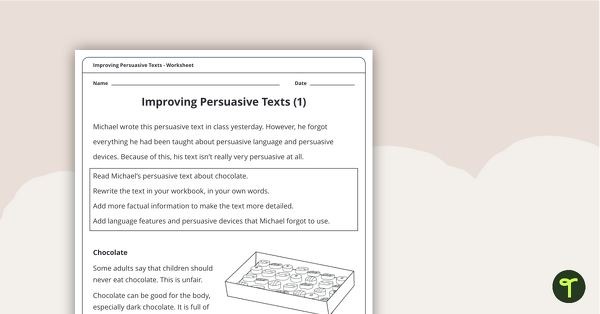
Improving Persuasive Texts Worksheets
3 pieces of text for students to rewrite in order to make them more persuasive.
- Plus Plan
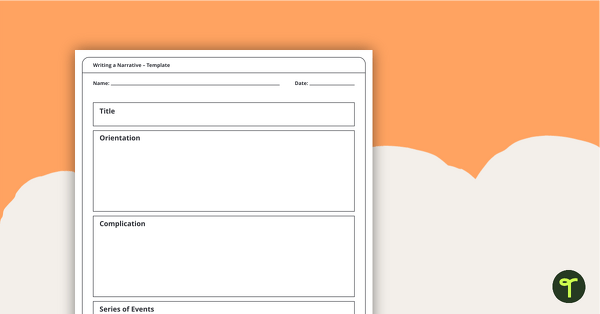
Writing a Narrative – Template
A template for students to use when planning a narrative text.